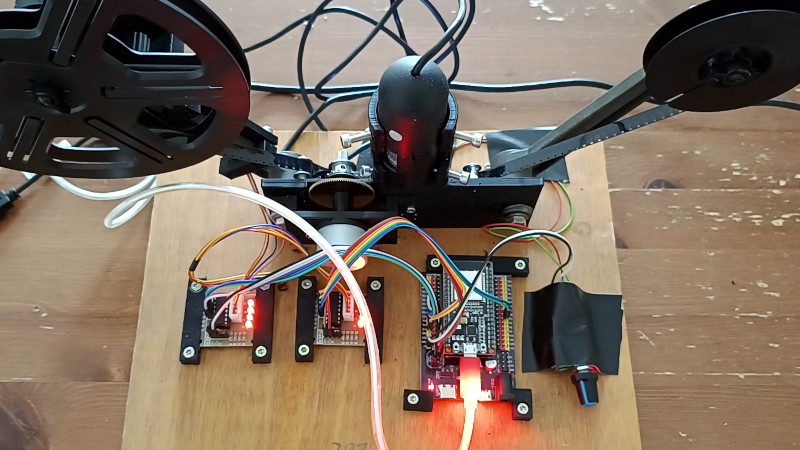There’s a pleasing retro analogue experience to shooting Super 8 film, giving as it does the feel of a 1970s home movie to your work. But once you’ve had the film developed, there’s a need for a projector to enjoy the result. Far better to digitize it for a more modern viewing and editing experience. [Elbert] has made a digitizer for 8mm film which takes the best approach, snapping each frame individually to be joined together in a video file as a whole.
The frame of the device is 3D printed, but some parts of a film transport must be higher quality than a printed part can deliver. These, in particular the sprockets, are salvaged from a film viewer, and the movement is powered by a set of stepper motors. The steppers are controlled by an ESP32, and the optics are provided by a USB microscope. All this is hooked up to a PC which grabs each image, and finally stitches them all together using ffmpeg.
As anyone who has dabbled in 8mm film will tell you, there is a lot in the quality of a film digitizer, and it’s often worth paying for a professional job from someone aimed at the film-making world rather than you local photographic print booth. It would be interesting to take a look at this device, and see whether its quality is worth pursuing. After all, some of us have been known to dabble in 8mm film.
















Some film transports optically detect the sprocket holes instead of using actual sprockets.
With a bit of a decent camera it would have plenty resolution to capture both the frame and the holes in a single picture. You can probably even capture 2 or more frames in a single picture, depending on the camera quality. The rest would be post processing in software
Post processing in software is certainly an option… But is this software already available or does it needs to be written from scratch? Not everyone is a programmer.
Yes – this is just one such project https://github.com/matthewepler/kinograph/tree/master
I built a system for handling damaged film and I wanted contact with the film to be as minimal as possible, so tension and positioning is done purely through motor control and sprocket detection via camera. That’s done at lower resolution so I can process frames quickly (about 10fps) and then take 3 higher resolution pics of varying exposure.
That would be an interesting post here on HAD!
It is better not to clip to the 8mm aperture. There is often some picture outside the aperture as well as film data.
Sprocketless scanners are particularly important for archive material. With a fresh roll of film you can be pretty sure the sprocket holes will be in good condition and correctly spaced. Old reels of possibly unknown heratige may have streched, shrunk or had their holes damaged, running these through a regular system could cause irreparable harm. They can also accomodate any older oddball formats that may be impossible to find the correct equiptment for.